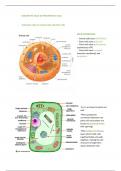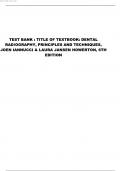Summary
Summary TOPIC 3 A LEVEL BIOLOGY EDEXCEL (A) - A* NOTES
- Module
- Voice of the genome
- Institution
- PEARSON (PEARSON)
This document contains EVERYTHING you need to know in year 1 Edexcel (A) Biology (Salters-Nuffield) for topic 3 - Voice of the genome. I have included the most important information from the book, MARK SCHEMES and revision sheets. I wrote these notes after solving all past papers and all availabl...
[Show more]




